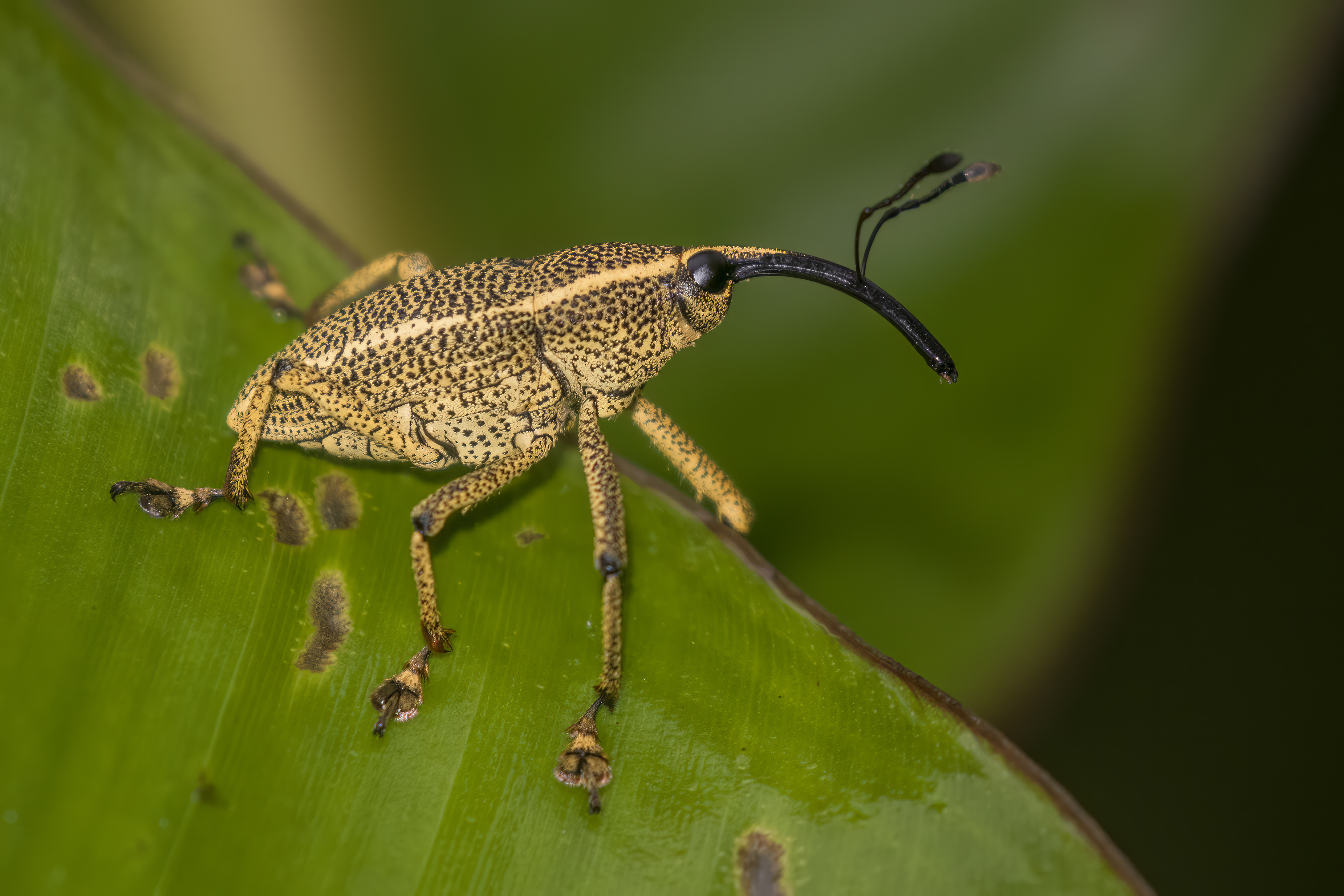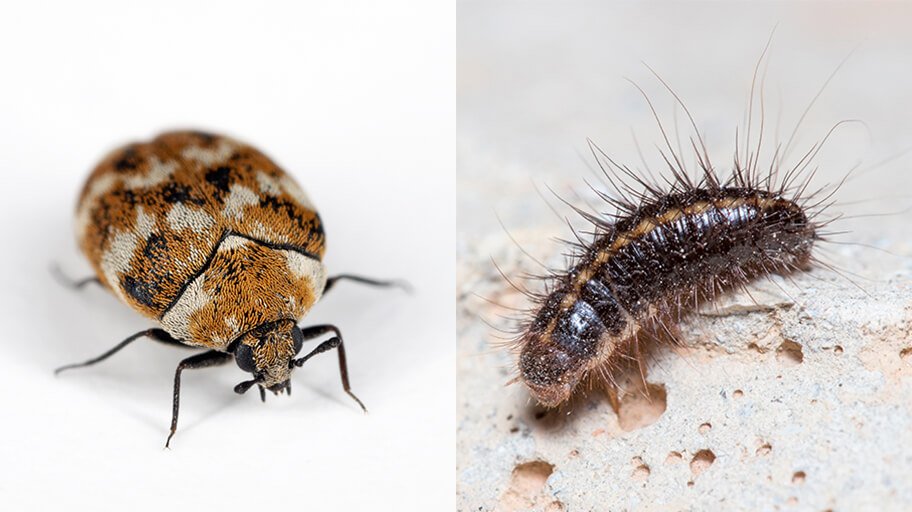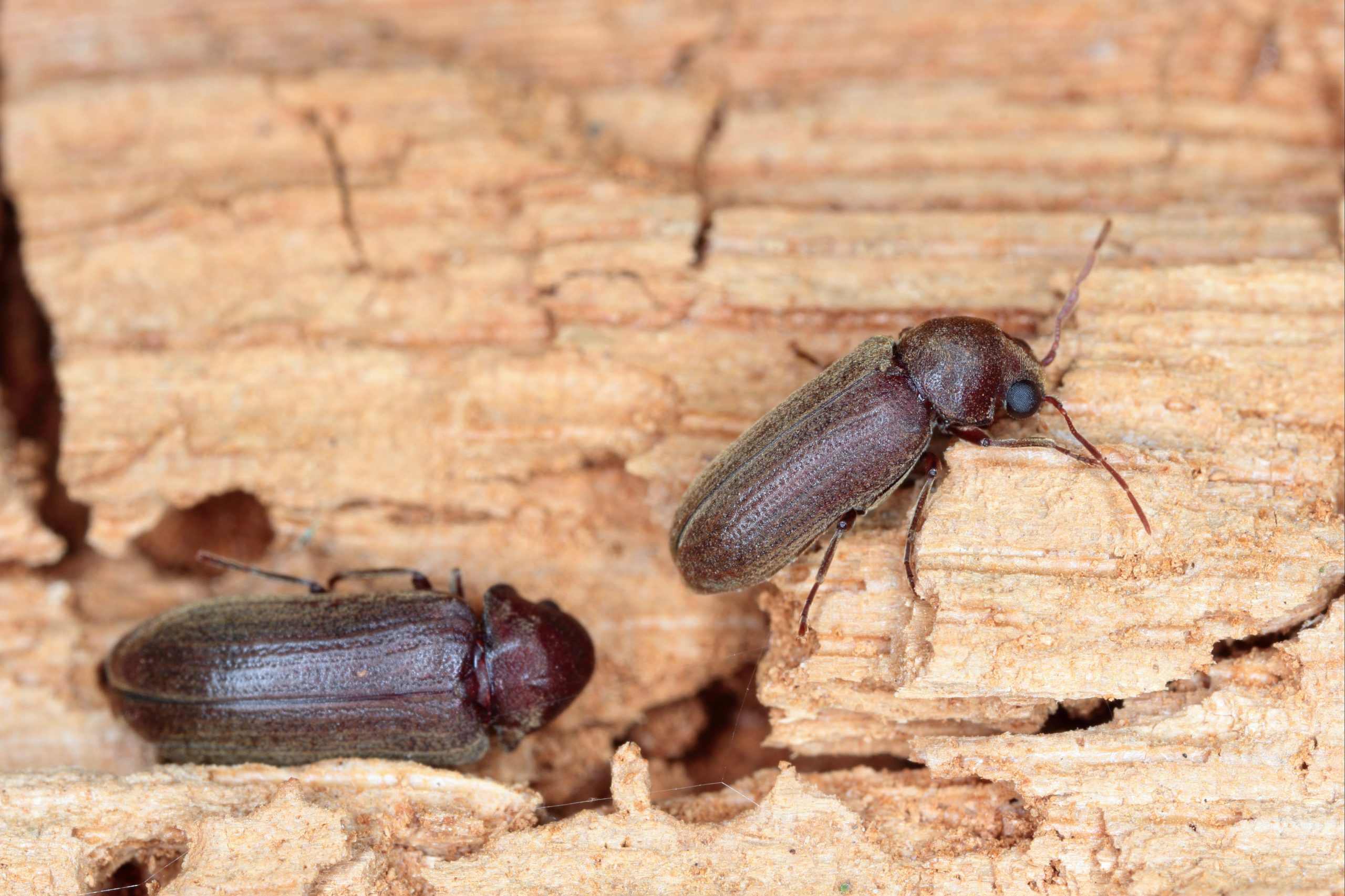Beetles are a common household pest that can cause significant damage if left unchecked. There are thousands of different types of beetles, but only a few are likely to cause trouble inside your house.
In this article, we will discuss the most common types of beetles that you may find in your home. We will also provide information on how to identify them, their behavior, and the damage they can cause.
You are reading: House Beetles Identification: The Most Common Types Of Beetles In Your Home
By understanding the different types of beetles that can infest your home, you can take the necessary steps to control and eliminate the infestation.

10 Types Of Beetles In Your Home
Carpet beetles

Carpet beetles are a common household pest that can cause significant damage to carpets, rugs, and other fabrics if left unchecked. They are small, oval-shaped insects that range in color from black to various mottled patterns of white, brown, yellow, and orange.
Carpet beetles can also thrive on lint, hair, and debris accumulating under baseboards and inside floor vents and ducts. The pests can also proliferate on bird nests, animal carcasses, and dead insects, which tend to be associated with attics, chimneys, basements, and other areas of the home.
Furniture beetles

Furniture beetles, also known as common furniture beetles or wood-boring beetles, are small insects that can cause significant damage to furniture, structural and decorative wood in and around homes and other buildings. They are typically 3-5mm in length, with an elongated and cylindrical body that ranges in color from reddish-brown to dark brown.
The adult furniture beetle is characterized by a long brown pill-shaped body. These beetles can be brought into the home inadvertently, in already infested furniture, or attracted by damp structural beams commonly found in crawl spaces.
Once furniture beetle eggs hatch, the larvae consume the surrounding wood and develop within the timber, before exiting as fully grown beetles.
When eating, they drill deep into the wood, creating wood dust and when leaving, they make exit holes, all of which damages furniture, flooring, and wood frames.
Powderpost beetles
Powderpost beetles are a type of wood-boring beetle that can cause significant damage to seasoned hardwoods such as flooring, paneling, furniture, and other wood materials. They are small, brown insects that are usually less than 1/4-inch in length and emerge from infested wood from late winter through early summer.
The developing grub-like larvae inflict damage as they create narrow, meandering tunnels in wood as they feed, and tunneling and larval development take place entirely below the wood surface.
Read more : 5 Types Of Wasps In California Ranked By The Pain Of Their Sting
Infestations are typically discovered after noticing powder, accompanied by small, round “shot holes” in the wood surface.
American spider beetles
American spider beetles are small beetles belonging to the family Anobiidae. They are called spider beetles because they look somewhat like small spiders (or large mites) due to their long legs and relatively large, rounded abdomens.
The most common type of spider beetle in North America is the Mezium americanum, or American spider beetle. They are general scavengers and can be found in pantries, museums, grain mills, warehouses, and attics that contain bird, rodent, or bat droppings.
The American spider beetle adult is from 1.5 to 3.5 millimeters in length and has a dark reddish-brown to black, shiny, globular abdomen. The head, thorax, legs, and antennae are covered with hairs that are a pale yellow to cream color.
American spider beetles are not a threat to human health, but they can become nuisances when they chew holes in packaging, leave fecal pellets, and contaminate food.
Deathwatch beetles
Deathwatch beetles are a type of wood-boring beetle that sometimes infest the structural timbers of old buildings, trees, and inside tunnels left behind by previous larvae.
They are part of the beetle family Ptinidae, formerly known as Anobiidae, which includes a number of subfamilies including Ptininae, the spider beetles which are mostly scavengers, Anobiinae, wood-boring beetles, and Ernobiinae, deathwatch beetles, also wood-borers. The adult beetle is brown and measures on average 7 mm (0.3 in) long.
Eggs are laid in dark crevices in old wood inside buildings, and the larvae bore into the timber, feeding for up to ten years before pupating, and later emerging from the wood as adult beetles.
The deathwatch beetle gets its name from the tapping sound it makes when trying to attract a mate, which was believed to forecast an approaching death according to superstition.
False powderpost beetles
False powderpost beetles are a specific variation within the Bostrichidae family of beetles, which includes more than 700 described species. They are also referred to as auger beetles or horned powderpost beetles.
False powderpost beetles are typically reddish-brown to black and range from ⅛ to 1 inch in size, with an elongated and cylindrical body. They prefer hardwood, but they will attack softwood, and most species only infest fresh wood and will not infest or re-infest seasoned wood.
False powderpost beetles are often confused with powderpost beetles because they cause similar-looking damage to wood.
Weevils
Weevils are a type of beetle belonging to the superfamily Curculionoidea, known for their elongated snouts. They are usually small, less than 6 mm in length, and herbivorous. There are approximately 97,000 species of weevils known, with most of them in the family Curculionidae (the true weevils).
Weevils are considered pests because of their ability to damage and kill crops. The most common types of weevils that infest pantries and cupboards are rice weevils, granary or wheat weevils, and maize weevils.
Read more : 10 Types Of Animals With Antlers
Weevils can multiply quickly and spread throughout your kitchen, infesting flour, rice, cornmeal, and other dry goods in the pantry. Weevils live and feed inside the food item, and the female chews a hole into a seed or grain kernel and deposits an egg inside.
Weevils enter buildings by crawling through cracks or openings around foundations, doors, and windows. They do not harm people or pets, damage buildings or property, or infest food products. Weevils are a temporary nuisance, and keeping them out is the best control method.
Ladybugs
Ladybugs, also known as lady beetles or ladybird beetles, are a type of small beetle belonging to the family Coccinellidae. Here are some interesting facts about ladybugs:
– There are about 5,000 different species of ladybugs in the world.
– Ladybugs are colorful for a reason. Their markings tell predators: “Eat something else! I taste terrible.” When threatened, the bugs will secrete an oily, foul-tasting fluid from joints in their legs.
– Ladybugs are beneficial insects because they eat aphids and other plant-eating pests. One ladybug can eat up to 5,000 insects in its lifetime.
– Ladybugs lay their eggs in clusters or rows on the underside of a leaf, usually where aphids have gathered.
– Ladybugs are harmless to humans and are often considered cute by people who don’t like other insects. Some people think ladybugs are a sign of good luck.
– Minnesota is home to more than 50 species of native lady beetles, as well as introduced lady beetle species.
Ladybugs are a welcome sight in gardens and are often used as a natural form of pest control.
Ground beetles
Ground beetles are a large and diverse family of beetles, with over 40,000 species worldwide, around 2,000 of which are found in North America and 2,700 in Europe. They are primarily carnivorous, but some members are herbivorous or omnivorous.
Ground beetles are known for their long legs and powerful mandibles, which enable them to be voracious predators, important for the biological control of insect pests on farms. They are typically found on the ground under logs, rocks, wood, leaves, boards, and other debris, and commonly reside in agricultural zones, such as fruit orchards.
Ground beetles are nocturnal creatures that remain hidden during the day, and they only reproduce outdoors. While ground beetles can invade buildings from time to time, they are not harmful to humans or pets, and they only reproduce outdoors.
Ground beetles are considered beneficial insects because they prey on garden pests like ants, aphids, caterpillars, maggots, slugs, and worms.
Soldier beetles
Soldier beetles are a family of beetles belonging to the family Cantharidae. Here are some interesting facts about soldier beetles:
– Soldier beetles are relatively soft-bodied, straight-sided beetles that are cosmopolitan in distribution.
– There are around 5,000 different species of soldier beetles in the world, with many of them in the genus Chauliognathus.
– Soldier beetles are often brightly colored, marked with yellow, orange, or red, plus black or brown, and are soft-bodied with long legs and long, threadlike antennae.
– Soldier beetles are beneficial insects because they mainly feed on pollen and nectar, making them important pollinators. They are particularly attracted to yellow flowers.
– Soldier beetles are also predacious and feed on other insects, such as caterpillars, aphids, and other soft-bodied insects.
– Soldier beetle larvae are long, slender, and worm-like, and they spend the winter in damp soil and debris or under loose bark.
– Soldier beetles are harmless to plants and are beneficial as pollinators, so there is no need to control them.
Soldier beetles are a welcome sight in gardens and are often used as a natural form of pest control.
FAQS
1. What are house beetles?
House beetles are a common household pest that can cause significant damage if left unchecked. There are thousands of different types of beetles, but only a few are likely to cause trouble inside your house.
2. What are the most common types of house beetles?
The most common types of house beetles are carpet beetles, furniture beetles, powderpost beetles, American spider beetles, deathwatch beetles, false powderpost beetles, weevils, ladybugs, ground beetles, and soldier beetles.
3. How can I identify house beetles?
House beetles can be identified by their hardened, shell-like bodies which appear to have a line running down their backs. They come in a wide variety of shapes, sizes, and colors, so it’s important to identify the specific type of beetle in order to effectively control and eliminate the infestation.
4. What kind of damage can house beetles cause?
House beetles can cause damage to carpets, rugs, furniture, structural and decorative wood, stored food products, and other fabrics. Some types of beetles can also damage crops and plants.
5. How can I control and eliminate a house beetle infestation?
The best way to control and eliminate a house beetle infestation is to identify the specific type of beetle and then take the necessary steps to control and eliminate the infestation. This may include cleaning and vacuuming affected areas, using insecticides, and sealing cracks and openings around the home to prevent future infestations.
Source: https://petstutorial.com
Category: Animals










